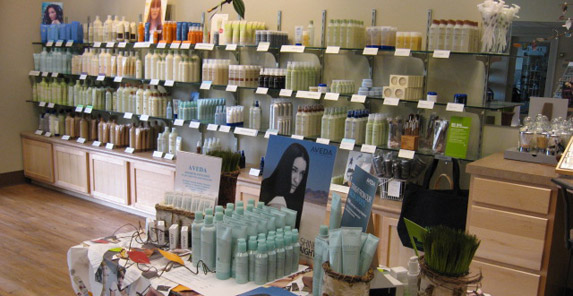Salon hair care marketers are struggling to maintain a competitive edge in the arena of professional hair care. Keeping up with changing trends and fashions is no longer the only challenge. Along with changing styles, companies also have to take into account the effects of the economic downturn and demands of the changing consumer.
With salon hair care sales posting declines in 2009, hair coloring products is the only category not to experience the sharp declines that happened along with the rest of the market in both Europe and the United States. Hair colorants are driven by several new product launches and formula innovations in Europe and by fashion trends and an aging population in the United States. Younger consumers in both regions color their hair as a fashion statement and as a way to mimic runway fashions and what celebrities are doing.
In the hair colorant arena, ammonia-free products are becoming popular. One of the biggest launches was INOA, launched by L’Oreal Professional in Europe at the end of 2009. It claims to offer consumers desirable effects with the odor-free, less damaging product in a new three-step technology. It had a big impact on consumer behavior in Europe where historically hair coloring has displayed the highest growth. In May 2010, INOA was launched in the United States as well. Because of its recent launch it is still too early to estimate what effect the launch of INOA will have on the U.S. market, but it is a brand that other hair coloring companies will certainly be watching.
What drives the success of one company and makes another fail are factors that set the pace for the future of the industry. It is necessary for all brands to take initiatives in inventing new, interesting marketing strategies to help drive business.
One of the examples is the partnership of Sephora and Estée Lauder’s Bumble and bumble brand whereby Bumble and bumble will be tested in 10 Sephora locations with a plan in place for how these Sephora retail sales could drive traffic back into Bumble salons.
Another example is Tigi’s launch of the Rockaholic line, targeting consumers who like rock music, which was launched with a party where guests rocked the red carpet and enjoyed a runway show. Later, Tigi hooked-up with West Coast Customs Coach to build the Rockaholic tour bus/traveling salon to provide hairdressers with a unique educational experience.
Some consumer behavior is similar in both Europe and the United States. Stretching time between salon visits, purchasing fewer take-home products, migrating to less expensive brands, and switching to products in less expensive channels are all affecting the salon hair care market.
Meanwhile, a bipolarization of the market has occurred in Europe. End consumers and salons are moving toward less expensive brands in order to reduce their costs. Product sales targeting middle-market consumer tend to be much more affected, and at the same time expensive brands such as Kérastase are arguably (depending on marketer) less affected as they tend to be sold in “selective” salons and cater the needs of quite wealthy consumers, which have been touched less by the economic crisis.
In the United States, however, all income levels have been hit including the very wealthy as Americans re-evaluate how they spend their money. Some high-end brands including Kérastase and Bumble and bumble have been hit even harder than more mainstream brands as consumers become more frugal.
Besides being more frugal, the consumer is becoming savvier on product ingredients (from the Internet, word-of-mouth, and the press), and many look for more natural ingredients (e.g., food-based such as yogurt or aloe) or avoid known harmful ingredients. However, while consumers are interested in natural products, performance is more important than naturalness. Instead of focusing just on ingredients, consumers look at other factors such as how sustainable or environmentally conscious a company is.
Furthermore, natural-positioned lines are having heavy competition from the mass-market, and thus experience more downgrading consumption patterns. As a result, the industry players are strategizing to capture as much of the segmented market as possible, developing and launching products specifically targeted at different types of customers. Product and service segmentation according to age, gender, and lifestyle is one of the factors that can affect this market.
Written by
Pierrick Dutton ( responsible for European section of Salon Hair Care report)
Donna Barson ( the U.S. section)


